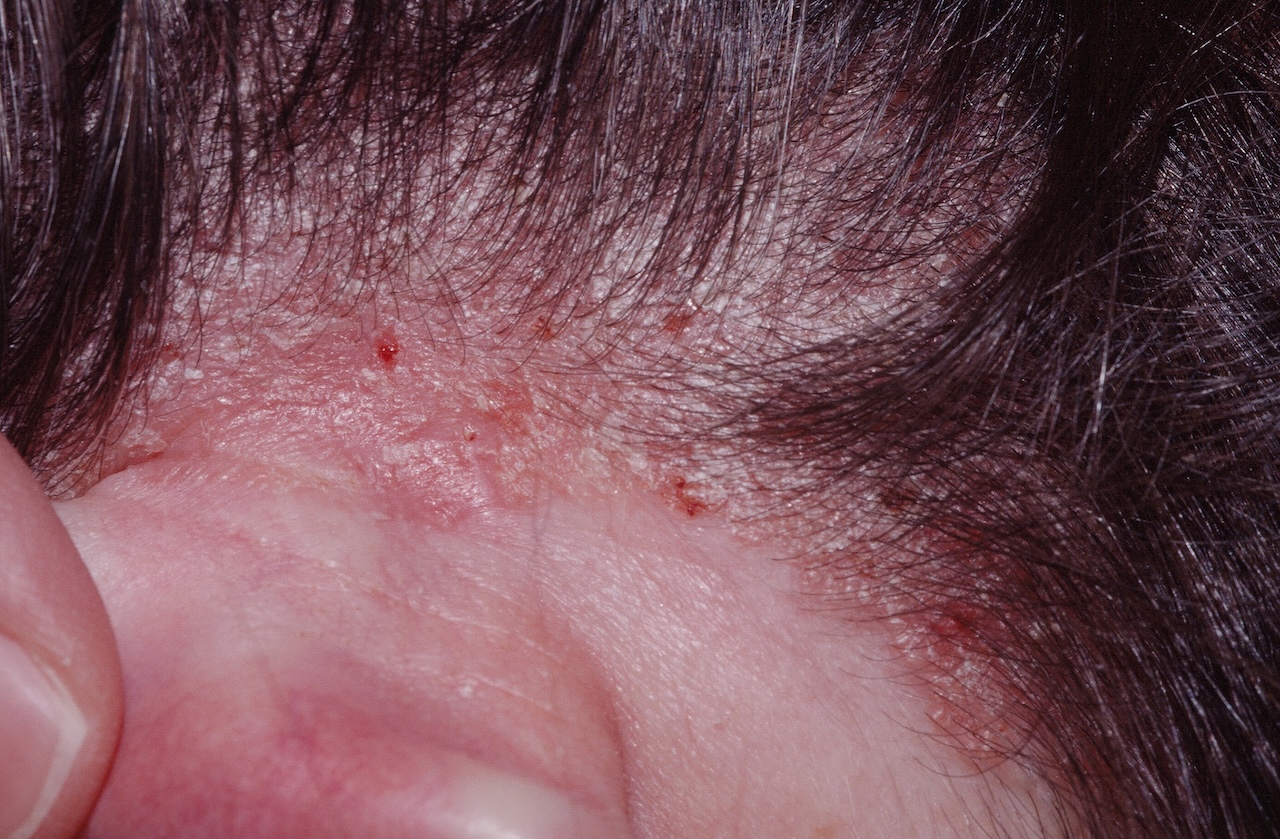
Redness and scale in the scalp is typical of Seborrheic Dermatitis.
SEBORRHEIC DERMATITIS
Seborrheic dermatitis (SD) is akin to bad dandruff. The skin is red and scaly, most commonly on the scalp, but it may affect the face and other areas as well.
- Perhaps the most common patient complaint is, "My scalp itches." Or patients may say their skin is "dry" and no amount of moisturizing helps. Patients may worry that other people think they have poor hygiene--which of course is not true.
- While the hair is normal, the scalp is scaly and mildly red.
- Many people not only have SD of the scalp, but have it on the face as well. It particularly likes the eyebrows and along the sides of the nose and the ears.
- Occasionally, the folds of the axilla may become involved.
- It is common with a peak in men 20-50 years of age.
- It appears to be caused by an immune response to overgrowth of the fungus Malassezia (formerly Pityrosporum).
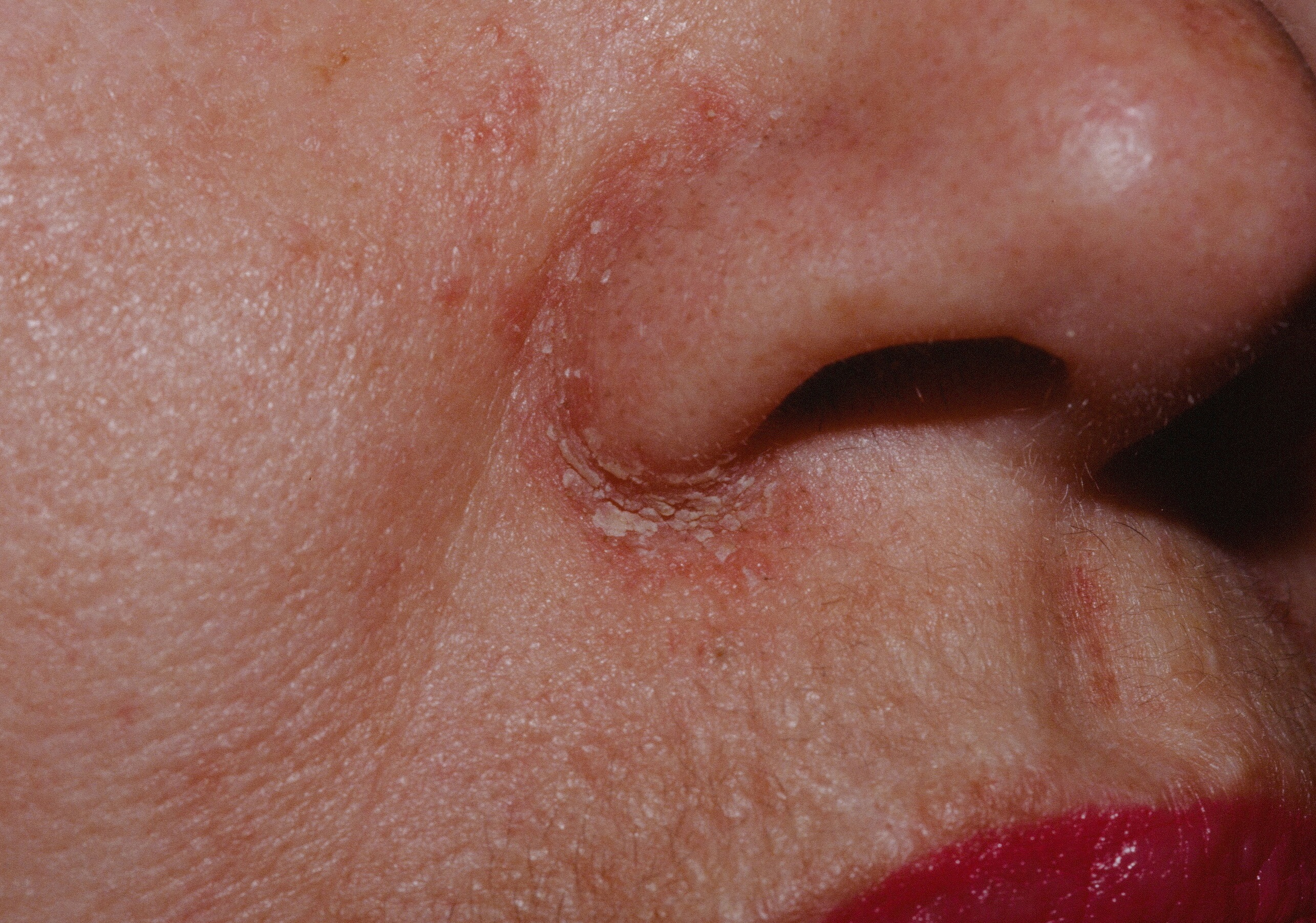
Seborrheic dermatitis of the nasolabial fold, a very common location for SD.
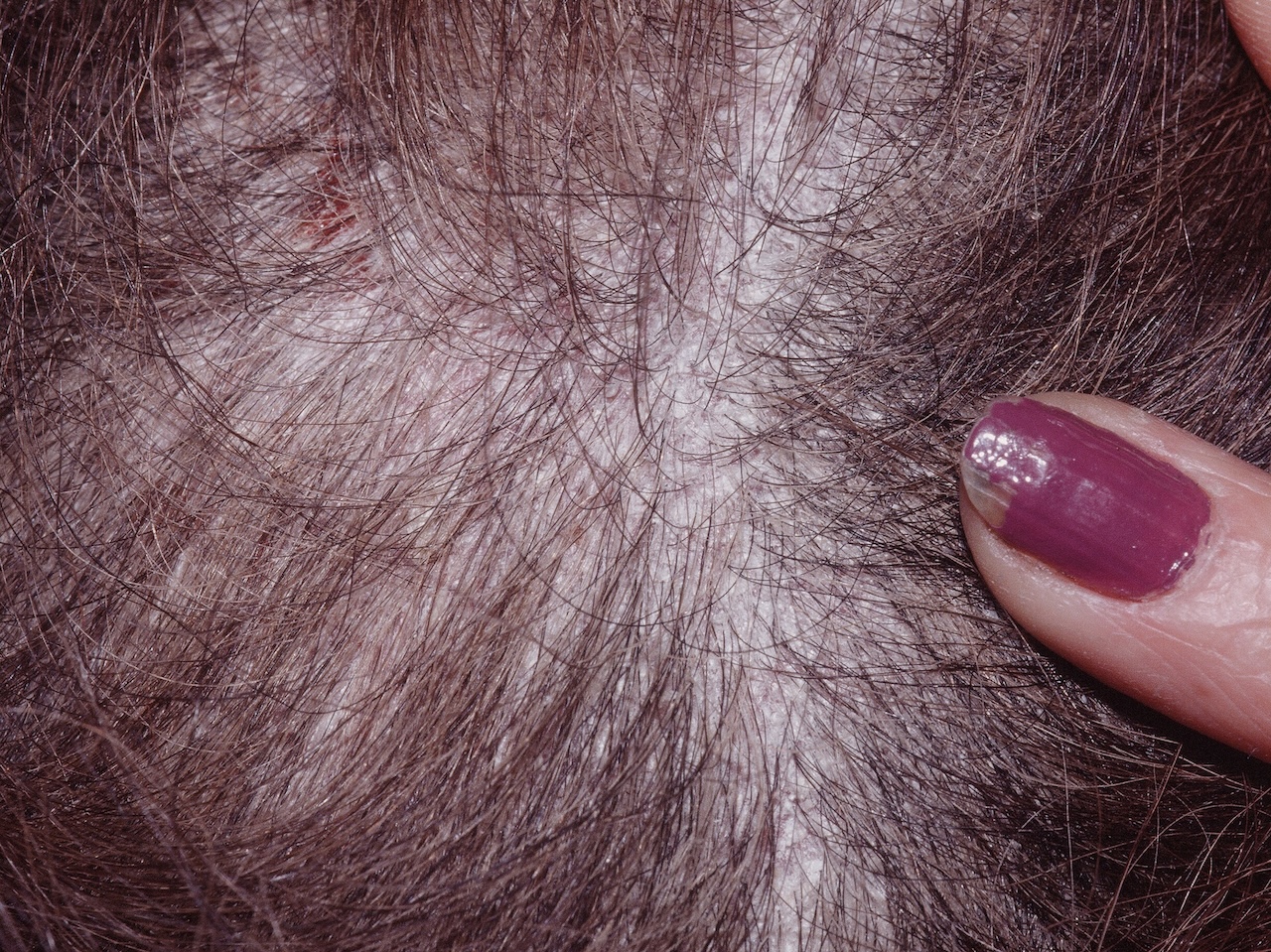
Seborrheic Dermatitis of the Scalp. Many people with SD think shampooing less often is best, but the opposite is true. Frequent, e.g. daily, shampooing with a medicated shampoo is recommended. Shampooing infrequently, e.g. once a week, can make SD worse.
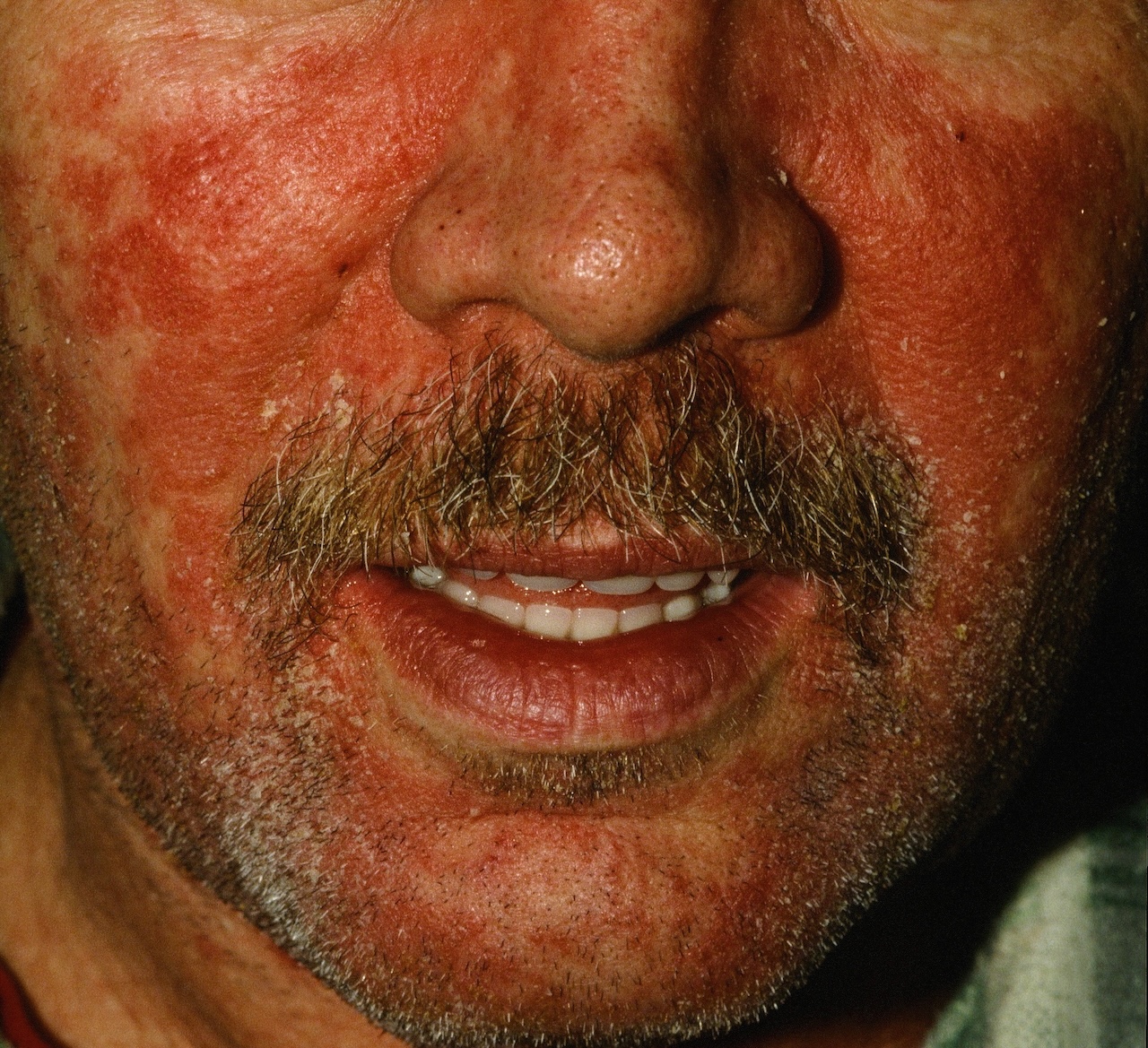
Seborrheic Dermatitis of the Face
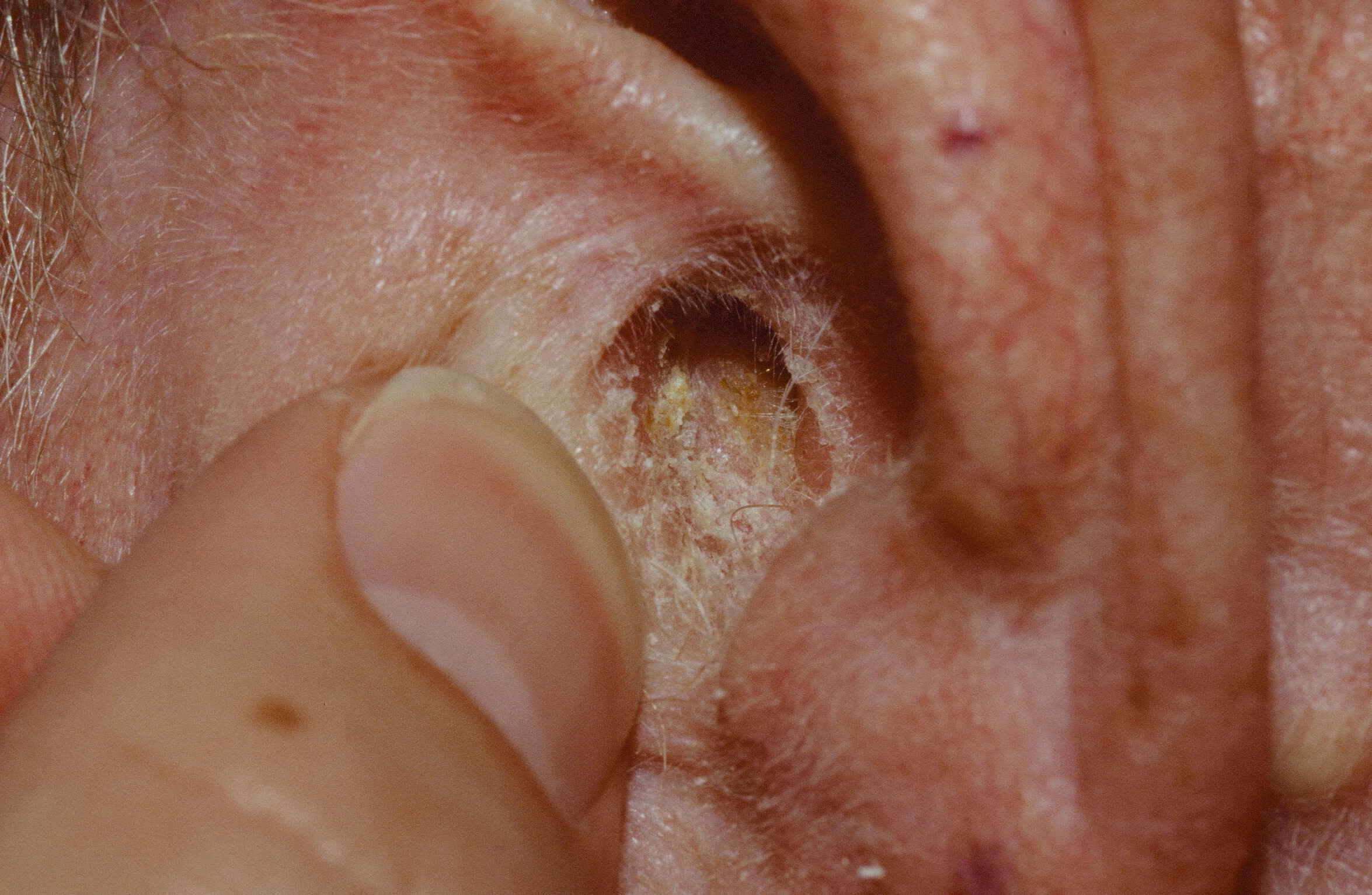
SD of the Ears. The ear canal may become red, scaly and itchy or the back of the ears may be involved.
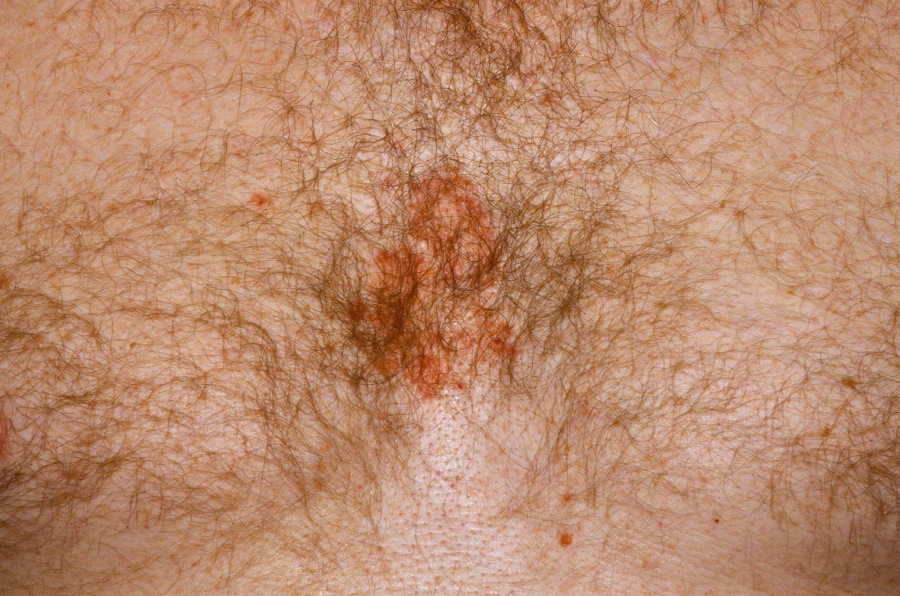
SD of the Chest. A red, scaly rash of the mid chest in a hairy man may occur, representing SD.
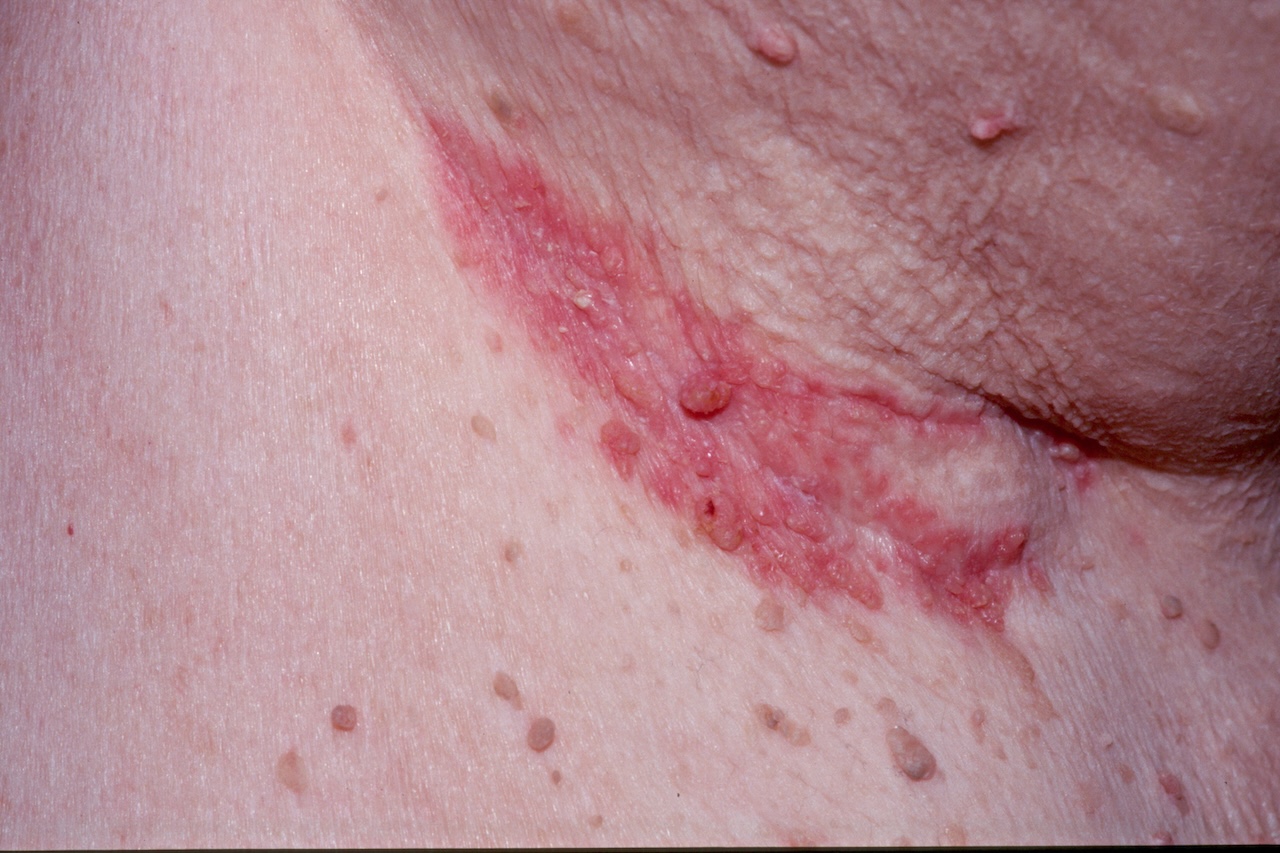
SD of the Axilla
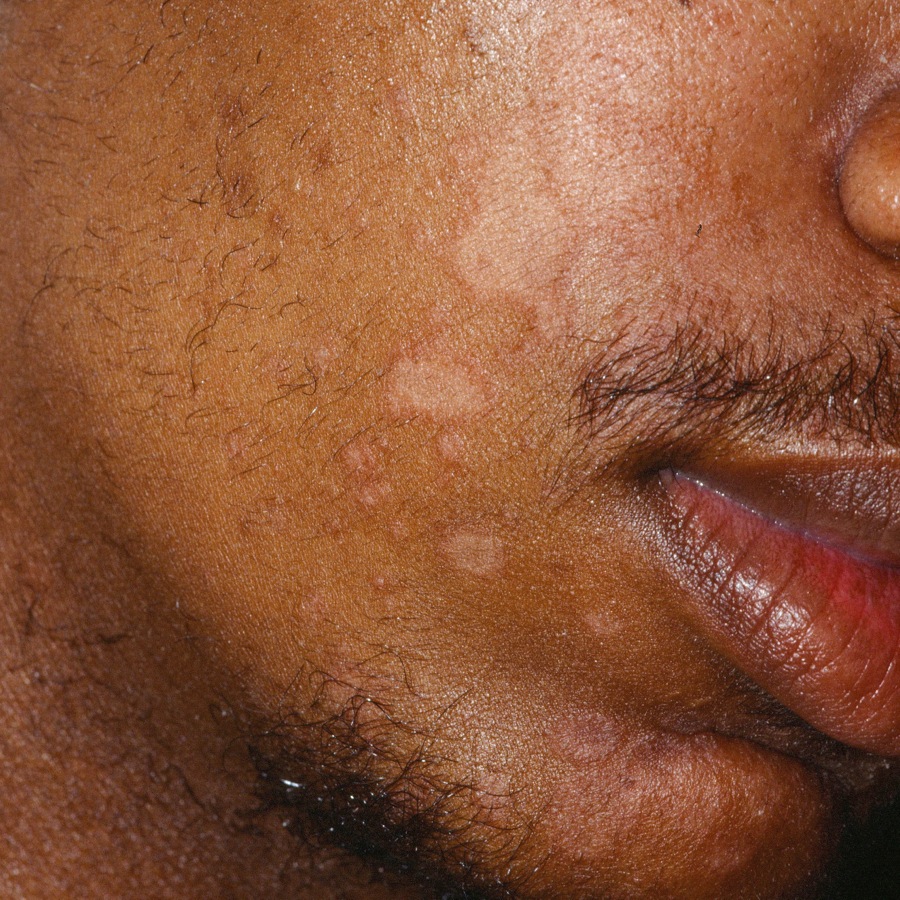
Seborrheic Dermatitis in Skin of Color
- SD is common in those with darker-skin, in part because they typically shampoo less often and may apply oils to their hair and scalp.
- Unfortunately, the oil may aggravate SD by "feeding" the fungus (Malassezia). Reducing the use of oils and a focused application of oils on the distal hair shaft avoiding the scalp may be helpful.
- The skin may lighten or darken in response to the inflammation of SD. The key here is to control the SD, allowing the skin color to return to normal over time. Elidel has been helpful here.
- Shampoo daily may be difficult for darker-skinned patients. Shampooing only 2-3 times per week is appropriate. Some have found Ketaconazole shampoo can dry out the hair. Zinc pyrithione (e.g. Head and Shoulders) 2-3/week is preferred by some.
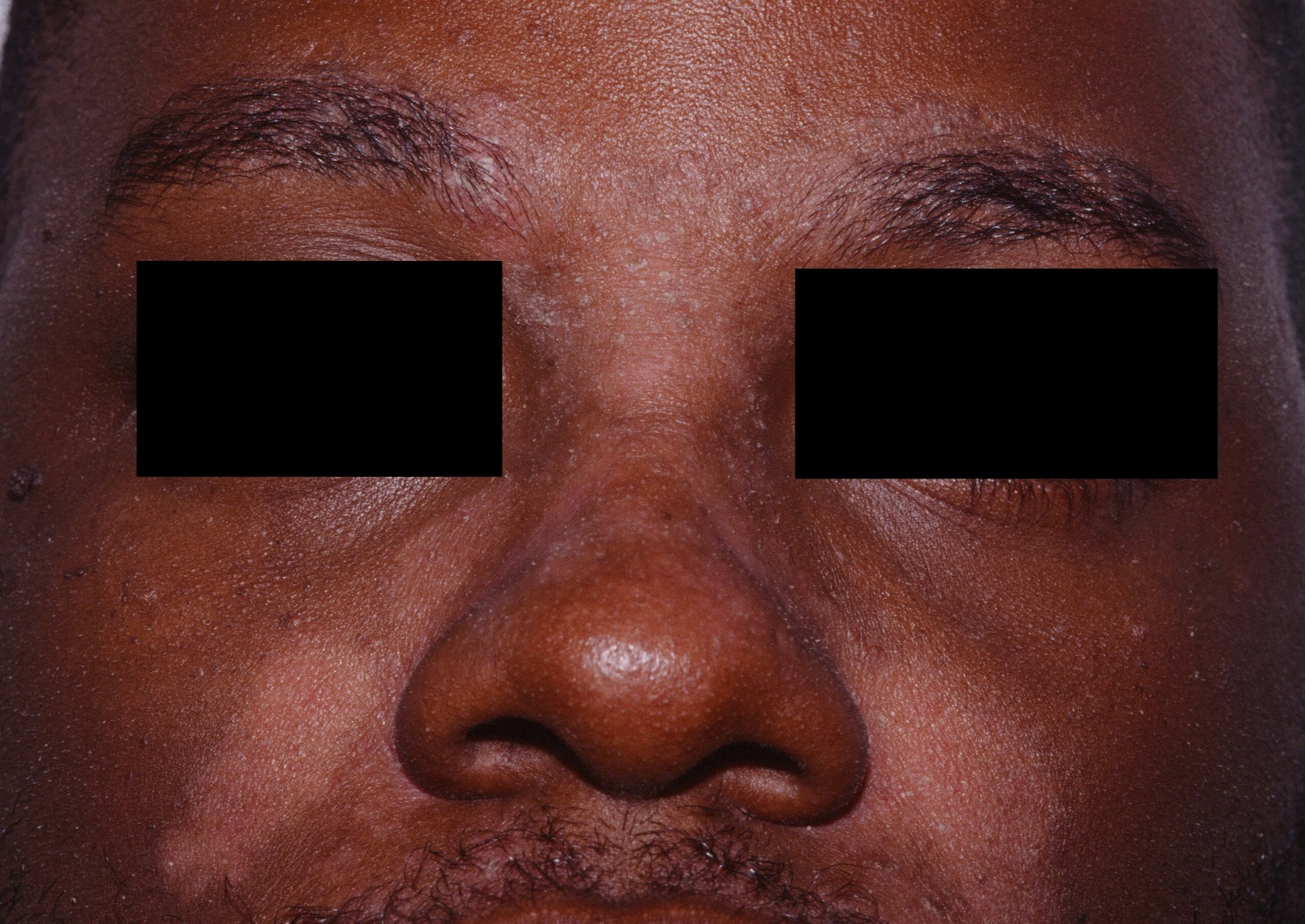
Seborrheic Dermatitis in skin of color showing redness, scale and hypopigmentation.
RegionalDerm
Who is Dr. White? | Privacy Policy | FAQs | Use of Images | Contact Dr. White
It is not the intention of RegionalDerm.com to provide specific medical advice, diagnosis or treatment. RegionalDerm.com only intends to provide users with information regarding various medical conditions for educational purposes and will not provide specific medical advice. Information on RegionalDerm.com is not intended as a substitute for seeking medical treatment and you should always seek the advice of a qualified healthcare provider for diagnosis and for answers to your individual questions. Information contained on RegionalDerm.com should never cause you to disregard professional medical advice or delay seeking treatment. If you live in the United States and believe you are having a medical emergency call 911 immediately.








